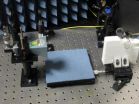(Press-News.org) A new approach to examining mammograms that takes into account a woman's health risk profile would reduce the number of cancer instances missed and also cut the number of false positives, according to a paper being presented at a conference of the Institute for Operations Research and the Management Sciences (INFORMS).
Mehmet U.S. Ayvaci of the University of Texas Dallas will present his research group's findings about the role of risk profiling in the interpretation of mammograms at Advances in Decision Analysis, a conference sponsored by the INFORMS Decision Analysis Society (DAS). The conference takes place June 16-18 at Georgetown University in Washington, DC.
The researchers found that providing radiologists with the patient's risk profile information for breast cancer at the most advantageous time when examining the mammogram , together with statistical weighting based on profile risk, reduces false negatives by 3.7%, thus alerting women whose cancer would have gone undiagnosed at an early stage, when treatment is most effective. It also reduces false positives by 3.23%, thus cutting unnecessary healthcare costs and sparing patients' needless distress.
Risk factors include family history, reproductive history, age, and ethnicity, and others forming the risk profile information.
The paper examines the tricky questions of whether providing risk profile information about women being screened for cancer biases radiologists and, if there is bias, whether this bias actually helps make readings more accurate.
Historically, available clinical evidence has been inconclusive on the use of profile information when interpreting mammograms. One position is that profile information helps radiologists make better decisions and should be employed when reading mammograms. A contradictory position holds that profile information may bias the radiologists. However, whether bias always causes harm is unclear.
The authors explored profile information and potential bias in mammography interpretation using a decision science technique called linear opinion pooling, which assigns weights to better aggregate probability estimates.
They analyzed the decision performance of three groups: (1) a mammogram-only reading, with no risk profile information about the patient, (2) an unbiased reading, in which radiologists consult the risk profile after examining the mammogram and (3) biased or "influenced" readings, in which radiologists consult a woman's risk profile as they examine the mammogram. Then they examined the conditions in which profile information could help improve biopsy decisions.
Numerical analysis using a clinical dataset from the Breast Cancer Surveillance Consortium revealed that use of profile information with an appropriate weight could reduce the false positives and the number of missed cancers when compared to cases where profile information was not examined.
Breast cancer is the second most deadly non-skin cancer. In 2013, approximately 232,000 breast cancer diagnoses were made and about 39,000 women died from the disease.
INFORMATION:
This research was made public in conjunction with the INFORMS Decision Analysis Society (DAS).Formed in 1980 with a thousand current members, DAS promotes the development and use of logical methods for improving decision-making in public and private enterprise. For more information, visit http://www.informs.org/Community/DAS.
About INFORMS
INFORMS is the leading international association for professionals in analytics and operations research (O.R.). INFORMS advances research, and develops and promotes best practices in analytics and O.R. through collaboration, knowledge sharing, and professional development. INFORMS helps business, government, and other organization professionals make better decisions to drive value to their organizations and society. Our certification program (CAP®), highly cited publications, educational meetings and conferences, continuing education, industry and process focused networking communities, competitions, and recognition provide professionals with the knowledge and connections they need to achieve ever greater value for their organizations. The INFORMS Decision Analysis Society (DAS), a subdivision of INFORMS, is a leader in applying decision science to problems that affect business, public policy, and personal lives. Further information about INFORMS, analytics, and operations research is at http://www.informs.org or @informs and further information about the INFORMS Decision Analysis Society (DAS) is at https://www.informs.org/Community/DAS.
Breast cancer diagnosis, mammography improved by considering patient risk: INFORMS paper
Missed cancer diagnoses go down 3.7 percent; false positives decline 3.23 percent
2014-06-17
ELSE PRESS RELEASES FROM THIS DATE:
Boost for dopamine packaging protects brain in Parkinson's model
2014-06-17
Researchers from Emory's Rollins School of Public Health discovered that an increase in the protein that helps store dopamine, a critical brain chemical, led to enhanced dopamine neurotransmission and protection from a Parkinson's disease-related neurotoxin in mice.
Dopamine and related neurotransmitters are stored in small storage packages called vesicles by the vesicular monoamine transporter (VMAT2). When released from these packages dopamine can help regulate movement, pleasure, and emotional response. Low dopamine levels are associated with neurodegenerative diseases ...
Gut bacteria predict survival after stem cell transplant, study shows
2014-06-17
(WASHINGTON, June 17, 2014) – New research, published online today in Blood, the Journal of the American Society of Hematology, suggests that the diversity of bacteria in the gastrointestinal tract of patients receiving stem cell transplants may be an important predictor of their post-transplant survival.
A healthy gastrointestinal tract contains a balanced community of microorganisms (known as microbiota), largely comprised of "friendly" bacteria that aid digestion and are important to immune system function. When this community of microbes is compromised, the microbiota ...
Ice cream chemistry: The inside scoop on a classic summer treat (video)
2014-06-17
WASHINGTON, June 17, 2014 — The summer weather is here, and if you've been out in the sun, you're probably craving some ice cream to cool off. In the American Chemical Society's latest Reactions video, American University Assistant Professor Matt Hartings, Ph.D., breaks down the chemistry of this favorite frozen treat, including what makes ice cream creamy or crunchy, and why it is so sweet. The video is available at http://youtu.be/-rlapUkWCSM
INFORMATION:
Subscribe to the series at Reactions YouTube, and follow us on Twitter @ACSreactions to be the first to see our ...
Climate change deflecting attention from biodiversity loss
2014-06-17
New research from the University of Kent suggests that recent high levels of media coverage for climate change may have deflected attention and funding from biodiversity loss.
In a paper published by the journal Bioscience, Kent conservationists also recommend that, to prevent biodiversity from becoming a declining priority, conservationists need to leverage the importance of climate change to obtain more funds and draw attention to other research areas such as biodiversity conservation.
For the study, the team conducted a content analysis of newspaper coverage in ...
Crowdsourcing the phase problem
2014-06-17
Compared with humans, computers have the capacity to solve problems at much greater speed. There are many problems, however, where computational speed alone is insufficient to find a correct or optimal solution, for example because the parameter "space" cannot be fully searched in a practical time. In contrast, the human mind can formulate expert knowledge specific for particular problems, providing a capacity to guide more efficient searches, although with more limited processing speed.
The power of the human contribution can be multiplied through the efforts of a greater ...
Genetic pathway can slow spread of ovarian cancer
2014-06-17
University of Adelaide research into the origins of ovarian cancer has led to the discovery of a genetic pathway that could slow the spread of the cancer.
The discovery is in part due to research into the genetics of humans' most distant mammalian relative, the platypus.
In a paper published today in the journal PLOS ONE, researchers characterize a genetic pathway – involving piRNA genes – that is turned on in ovarian cancer.
"This pathway is important for the development of the ovaries in drosophila flies but little is known about its role in the mammalian ovary," ...
NIST technique could make sub-wavelength images at radio frequencies
2014-06-17
Imaging and mapping of electric fields at radio frequencies (RF)* currently requires the use of metallic structures such as dipoles, probes and reference antennas. To make such measurements efficiently, the size of these structures needs to be on the order of the wavelength of the RF fields to be mapped. This poses practical limitations on the smallest features that can be measured.
New theoretical and experimental work by researchers at the National Institute of Standards and Technology (NIST) and the University of Michigan suggests an innovative method to overcome ...
Overweight + gene mutation = elevated liver values in children
2014-06-17
A study carried out at the Institute of Biomedicine of the University of Eastern Finland shows that a common mutation in the PNPLA3 gene combined with overweight results in elevated ALAT values in children. The ALAT value is an indicator of liver metabolism. In adults, this gene mutation is known to promote the accumulation of fat in the liver. The new results indicate that a healthy lifestyle is important already in childhood in order to prevent the accumulation of fat in the liver, and it is especially important for those carrying the risk gene. The results will be published ...
Brazilian surgeons review experience with soccer-related facial fractures for PRS-GO
2014-06-17
June 17,2014- Fractures of the nose and other facial bones are a relatively common and potentially serious injury in soccer players, reports a Brazilian study in Plastic and Reconstructive Surgery—Global Open® , the official open-access medical journal of the American Society of Plastic Surgeons (ASPS).
On the eve of the 2014 World Cup, a group of Brazilian plastic surgeons review their experience with soccer-related facial fractures requiring surgery. Dr. Dov Charles Goldenberg, MD, PhD, of University of São Paulo and colleagues write, "Due to exposure and the lack ...
Surfing the Web in class? Bad idea
2014-06-17
EAST LANSING, Mich. — Even the smartest college students suffer academically when they use the Internet in class for non-academic purposes, finds new research by Michigan State University scholars.
The study, funded by the National Science Foundation, speaks to typical lecture-hall culture in which professors compete for students' attention with laptops and smartphones.
"Students of all intellectual abilities should be responsible for not letting themselves be distracted by use of the Internet," said Susan Ravizza, associate professor of psychology and lead investigator ...
LAST 30 PRESS RELEASES:
Manta rays create mobile ecosystems, study finds
Study: Mixed results in using lipoic acid to treat progressive multiple sclerosis
Norbert Holtkamp appointed director of Fermi National Accelerator Laboratory
New agentic AI platform accelerates advanced optics design
Biologists discover neurons use physical signals — not electricity — to stabilize communication
Researchers discover that a hormone can access the brain by hitchhiking
University of Oklahoma researcher awarded funding to pursue AI-powered material design
Exploring how the visual system recovers following injury
Support for parents with infants at pediatric check-ups leads to better reading and math skills in elementary school
Kids’ behavioral health is a growing share of family health costs
Day & night: Cancer disrupts the brain’s natural rhythm
COVID-19 vaccination significantly reduces risk to pregnant women and baby
The role of vaccination in maternal and perinatal outcomes associated with COVID-19 in pregnancy
Mayo Clinic smartwatch system helps parents shorten and defuse children's severe tantrums early
Behavioral health spending spikes to 40% of all children’s health expenditures, nearly doubling in a decade
Digital cognitive behavioral treatment for generalized anxiety disorder
Expenditures for pediatric behavioral health care over time and estimated family financial burden
Air conditioning in nursing homes and mortality during extreme heat
The Alps to lose a record number of glaciers in the next decade
What makes a good proton conductor?
New science reporting guide published for journalists in Bulgaria
New international study reveals major survival gaps among children with cancer
New science reporting guide published for journalists in Turkey
Scientists develop a smarter mRNA therapy that knows which cells to target
Neuroanatomy-informed brain–machine hybrid intelligence for robust acoustic target detection
Eight SwRI hydrogen projects funded by ENERGYWERX
The Lundquist Institute and its start-up company Vitalex Biosciences Announces Strategic Advancement of Second-Generation fungal Vaccine VXV-01 through Phase 1 Trials under $40 Million Competitive Con
Fine particles in pollution are associated with early signs of autoimmune disease
Review article | Towards a Global Ground-Based Earth Observatory (GGBEO): Leveraging existing systems and networks
Penn and UMich create world’s smallest programmable, autonomous robots
[Press-News.org] Breast cancer diagnosis, mammography improved by considering patient risk: INFORMS paperMissed cancer diagnoses go down 3.7 percent; false positives decline 3.23 percent



